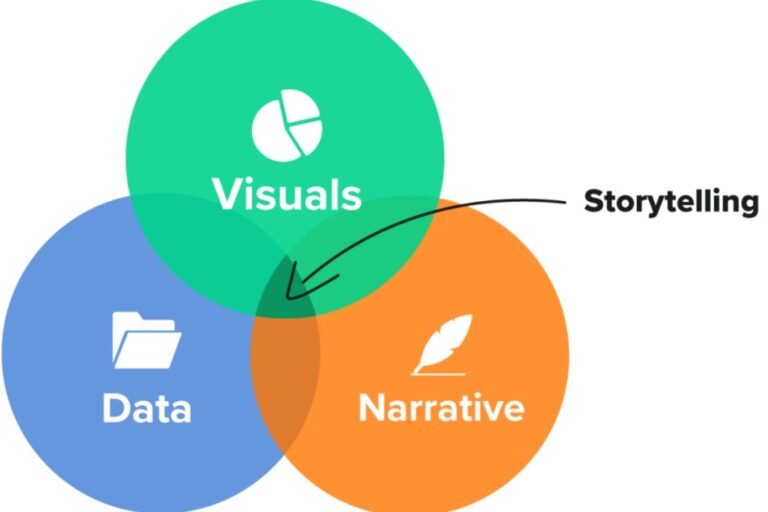Imagine standing before a vast canvas filled with numbers, charts, and patterns. To some, it might look like chaos—but to a skilled storyteller, it’s a masterpiece waiting to emerge. In the world of analytics, data storytelling transforms dense information into a narrative that resonates, persuades, and drives action. It bridges the gap between complex statistical models and the human understanding that fuels business decisions.
The Power of Story in a Data-Driven World
Data by itself is silent—it has potential but no voice. A spreadsheet doesn’t inspire action until someone interprets it, connects the dots, and communicates the “why” behind the numbers. Storytelling gives data life. It transforms metrics into meaning and dashboards into decisions.
Businesses today are flooded with data, from customer transactions to social media interactions. The challenge isn’t collecting it—it’s making sense of it. A well-crafted story turns analytics into a tool that aligns teams, clarifies objectives, and accelerates strategy.
For those building this skill, enrolling in a data science course in Mumbai helps professionals understand how to interpret complex datasets and turn their analytical findings into compelling stories that influence stakeholders.
The Structure of a Great Data Story
A powerful data story mirrors a good narrative: it has a beginning, middle, and end. The beginning establishes context—what problem are we solving? The middle explores the data—what patterns emerge? And the end provides clarity—what should we do next?
The key lies in combining logic and emotion. Facts appeal to reason, while stories connect with empathy. Together, they make data memorable and persuasive. For example, a sales report showing a 20% dip might seem alarming. But when framed as a story about shifting consumer preferences and the rise of competitors, it becomes an opportunity to pivot and innovate.
Good storytellers also tailor their message to their audience—technical for analysts, visual for executives, and strategic for decision-makers.
Visualisation: Turning Data into Dialogue
Data storytelling isn’t just about words—it’s also about visuals. A well-designed chart can convey in seconds what pages of text cannot. However, the goal isn’t decoration; it’s clarity.
Charts, graphs, and dashboards must highlight insights, not overwhelm the viewer. The right visual—whether a line graph showing growth or a heatmap revealing pain points—guides attention to what truly matters.
When learning through a data science course in Mumbai, students explore how to balance aesthetics with accuracy, ensuring their visuals not only inform but also engage. The right colour, scale, and comparison can make the difference between confusion and comprehension.
Emotion and Ethics in Storytelling
While data stories should be persuasive, they must also be honest. Numbers can be manipulated to tell biased or misleading stories. Ethical storytelling ensures transparency and integrity—crucial qualities for maintaining trust.
Emotion plays a subtle but significant role. Stories that connect to real human experiences—like improving healthcare, reducing waste, or enhancing education—are far more impactful. They remind audiences that behind every data point lies a person, a choice, and a consequence.
Bringing Data Stories to Life
The true mark of an effective data storyteller is the ability to drive action. The end goal isn’t just to inform but to inspire change. Whether it’s prompting an executive to approve a new product strategy or convincing a team to optimise their workflow, the story must lead to a decision.
The best storytellers are translators—they turn analytics into language that speaks to both the mind and the heart. They understand the nuances of tone, timing, and delivery, ensuring that their insights don’t get lost in translation.
Conclusion
In an era where every click and transaction generates data, storytelling becomes the compass that guides businesses toward clarity and action. It helps organisations see not just what is happening, but why it matters.
Developing this blend of analytical precision and narrative creativity requires training, curiosity, and practice. As businesses increasingly rely on data-driven insights, those who can tell compelling stories from numbers will shape the next generation of leaders and innovators.
By mastering this art, analysts can ensure that every dataset tells a story worth hearing—and every insight sparks meaningful change.

